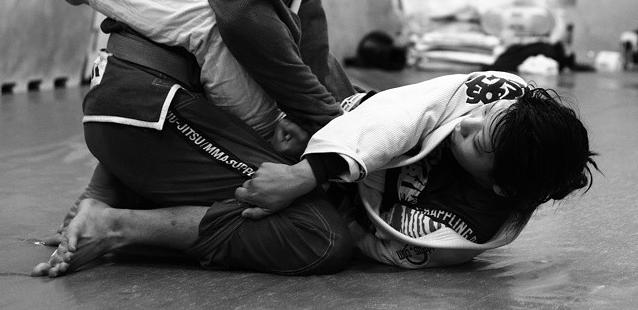“Female athletes endure two to eight times more anterior cruciate ligament, or ACL, injuries than their male counterparts”
This quote is from a University of Akron study and doesn’t bode well for female athletes who apparently are at much greater risk than their male training partners of ACL injuries. Hopefully it does come as a message to take better care of your knees and approach injury prevention in the right way. Athletes such as Ronda Rousey, Julianna Pena, Zoila Gurgel, Cat Zingano have all suffered with ACL injuries at some point in their training careers. It also seems many in the female BJJ Blogosphere have also been hit with this particular injury, blogging about post op rehab in the process. And I am sure many of you reading this have ACL Injury stories too!
We are getting closer to finding an answer to what cause this apparent predisposition towards ACL tears in female athletes. Be it laxity, physiological, structural, but the main cause in increasingly looks like the culprit being hormonal changes. One recent study finding that “rise in estrogen during the follicular phase decreases lysyl oxidase activity in our engineered ligament model and if this occurs in vivo may decrease the stiffness of ligaments and contribute to the elevated rate of ACL rupture in women.”
With this hormonal joint laxity is the combined risk that comes with larger Q angles. Q angle is the angle at which the femur meets the tiba, in men the femur points largely straight down, in women it often points inwards. This can cause knee tracking issues and instability at the knees. Q angle is what causes nasty valgus collapse (inward caving of the knee) you sometimes see when people squat. According to Bret Contreras “proportionately wider hips, increased Q-angles, diminished hip strength, and in my opinion from being taught to “sit like a lady” (along with reinforcing that movement pattern repeatedly throughout their lives).” Stands to reason that many of the injuries I see are caused in scrambles and or during standing phases when risk of traumatic forces are at their highest.
Be able to make the Shapes for your sport
We are seeing an over swing towards mobility work at the moment which isn’t helping the situation. The female grappler is actively encouraged to get into activities like yoga, which can dis-inhibit protective mechanisms that provide protection again injuries that result from sudden force absorption. people are spending 20-30 minutes mobility work for joints that may not need it. If you play a combat sport consider which joints you mobilise carefully, make it flexible enough to make the shapes you need to for your sport (Comfort being stacked or throwing a de la riva) any more than this and your risk for injury gets higher.
My counter to some of these issues would be get strong, get stable.
Stop Stretching Your Hamstrings! And make them stronger
Martial artists have been stretching the heck out of their hamstrings since forever! And changing a culture of stretching is difficult when it is so ingrained. You have to ask the question “I may have range of motion, but am I strong with in that range of motion?” What we want is hamstrings that are long ‘enough’ but also strong ‘enough’.
Eccentric strength and injury prevention are now being seen as a key component of training programs. Eccentric strength is the ability of muscle to yield under load, which makes the muscle more capable of absorbing force. You are basically teaching yourself to better apply the brakes. This is why eccentric posterior chain and hamstring work is such a crucial to prevention knee injuries. Below are a few exercise I regularly use with my clients. RDL’s, Zercher GM’s, Ball Curls and Nordic Curls all being great choices for hamstring strength.
Of particular note is the Nordic Hamstring curl or the Ghetto GHR which is increasingly seeing a lot of love in injury prevention programs. Mainly due to more research showing eccentric hamstring training have a huge effect on injury prevention. Increasing strength of the hamstring muscles helps stabilized the knee by providing “backward” forces on the lower leg. The distal hamstrings help protect the ACL from being stretched and ruptured as the quadriceps muscles contract and pull the tibia forward (knee extension). For more on hamstring stiffness and ACL injuries check out Brian Schiff’s excellent blog post on the topic.
Ghetto GHR or partner nordic curl below shows, how simple it is to do and requires almost no equipment. Pretty simple to break out on the mats!
As more female athletes take up MMA and BJJ professionally and recreationally the rate of ACL injuries could well spike. Participation in a combat sports can be rough on the joints as we all know. Its the Job of the coach and the athlete to take steps to minimise risk.
This is an ongoing series of blog posts from guest blogger and Strength & Conditioning coach William Wayland of Powering Through, who works with UFC, Cagewarriors and other high level combat athletes based in Chelmsford, UK. Facebook
